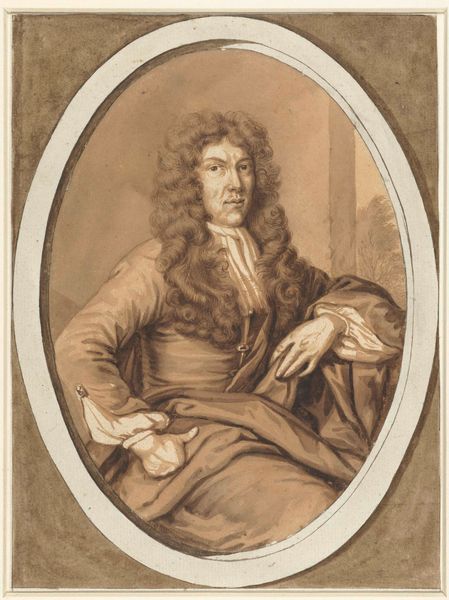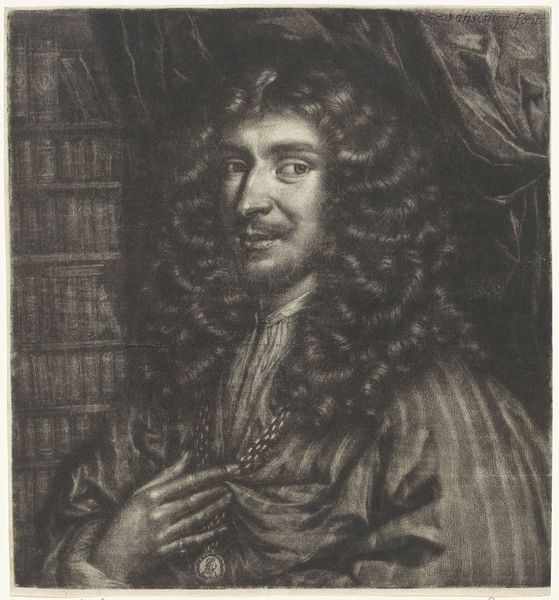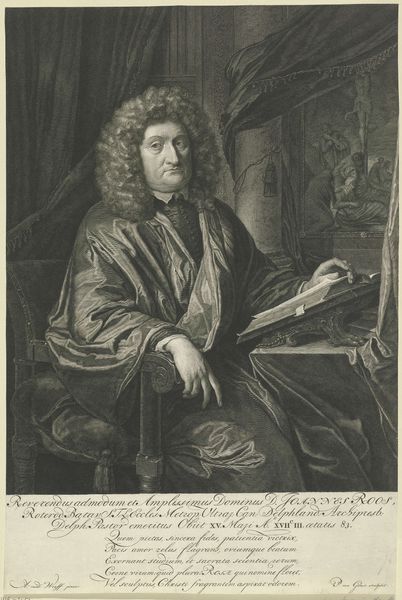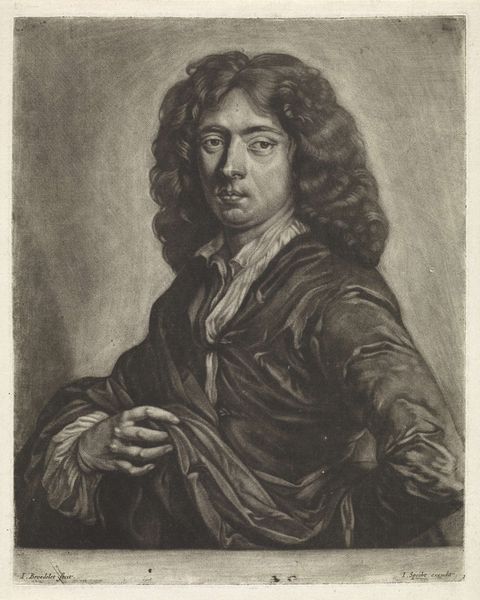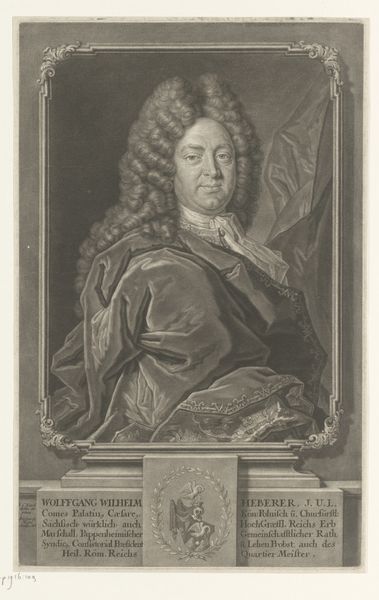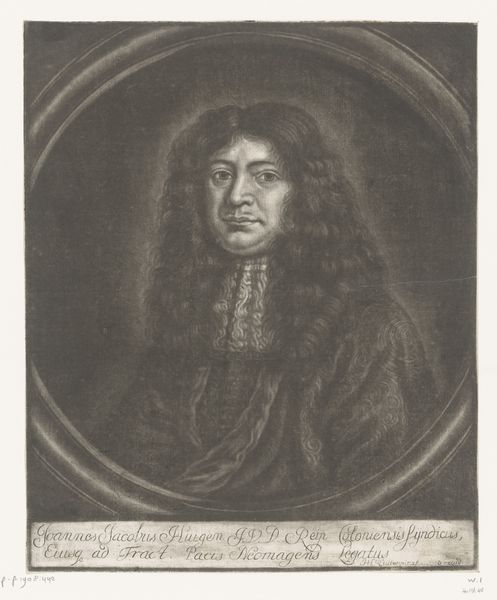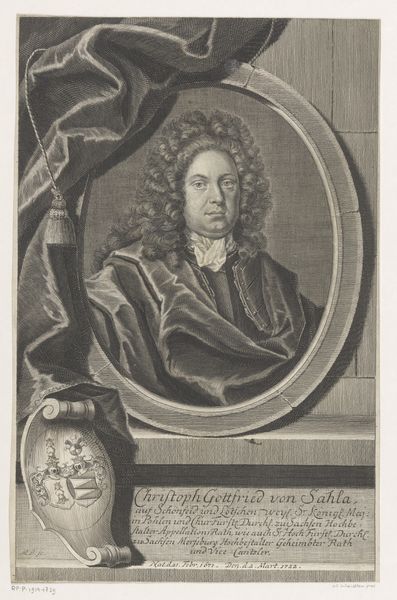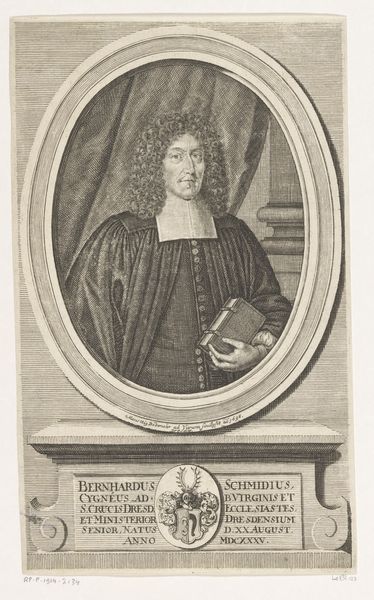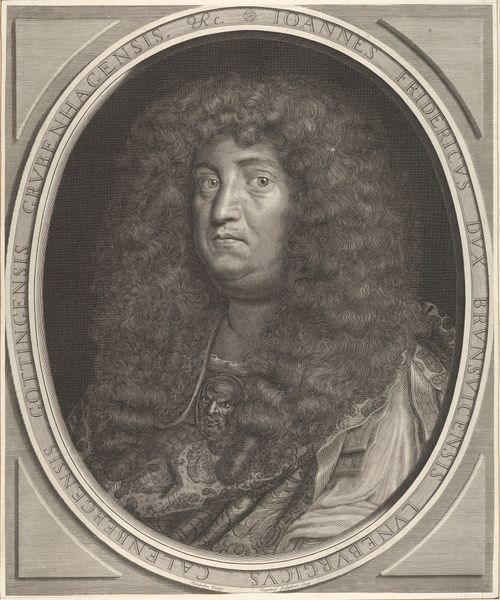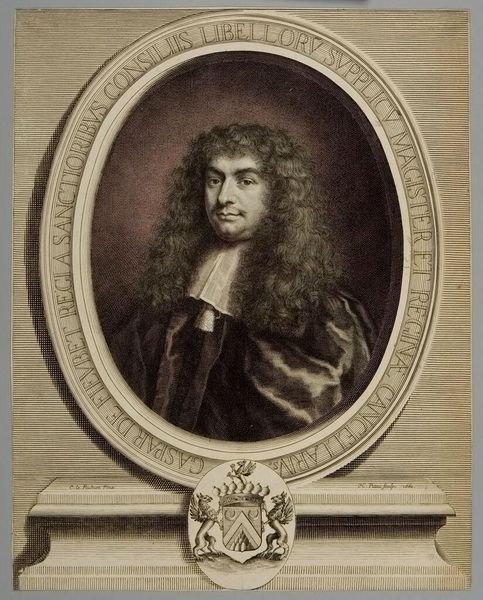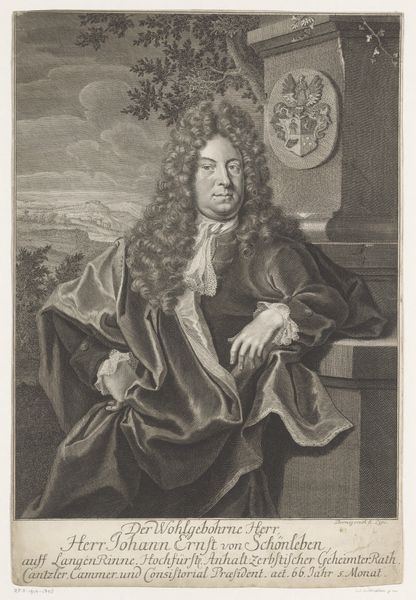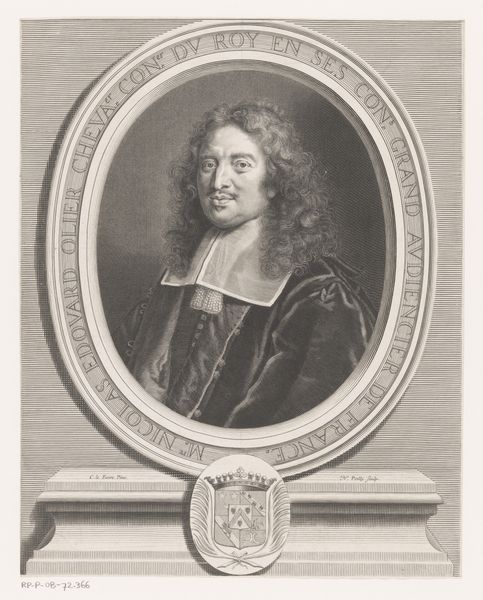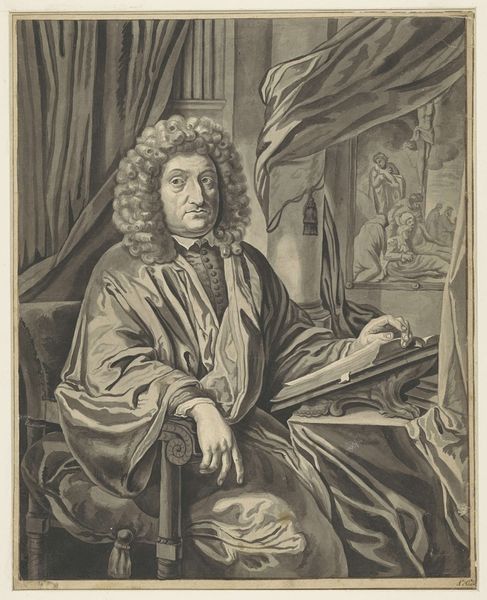
Portrait of Jan Boudaen Courten (1635-1716), lord of St. Laurens, Schellach and Popkensburg, Judge and alderman of Middelburg 1690 - 1753
0:00
0:00
painting, oil-paint
#
portrait
#
baroque
#
painting
#
oil-paint
#
genre-painting
Dimensions: height 49 cm, width 40 cm, depth 6 cm
Copyright: Rijks Museum: Open Domain
Editor: This is Caspar Netscher’s portrait of Jan Boudaen Courten, painted sometime between 1690 and 1753, using oil paints. I am immediately struck by how the fabric drapes—there’s an almost tangible quality to the materials depicted. What elements of this work do you find most compelling? Curator: The very obvious display of wealth in this piece highlights a crucial aspect of the Dutch Golden Age. Consider the material reality: Netscher, an artist dependent on patronage, crafted this portrait not only to immortalize Courten, but to explicitly showcase his access to luxurious materials like the expensive dyes used for clothing, and even the oil paints themselves. How do you think the act of painting reinforces the social hierarchy present here? Editor: So, you're saying that the painting is a demonstration of labor on both sides? Courten’s wealth allows him to commission Netscher’s skilled labor and Netscher showcases Courten's status through precise and luxurious material representation. Curator: Precisely. Think about the materiality of the wig, the lace. These were not just aesthetic choices, but potent signifiers of social standing, accessible to Courten but produced by unseen laborers. The act of depicting them with such meticulous detail reinforces their value and by extension, Courten's. How might the scale and composition play into this reading? Editor: Well, it seems the details are what matters most to demonstrate luxury and wealth, which the materiality of paint communicates effectively, from pigment to the canvas substrate. This wasn't just a representation, but a very effective advertisement of social and material power, one built from a lot of artifice and real labor! Curator: Indeed. Seeing art as material evidence of social practice encourages us to rethink it outside purely aesthetic terms.
Comments
No comments
Be the first to comment and join the conversation on the ultimate creative platform.
